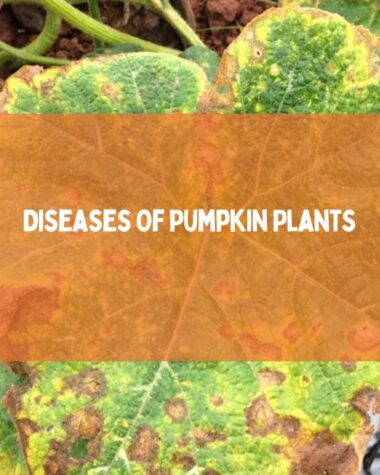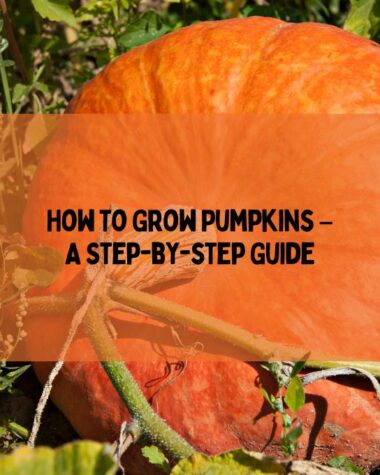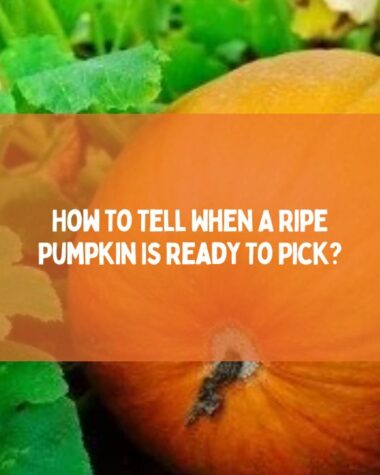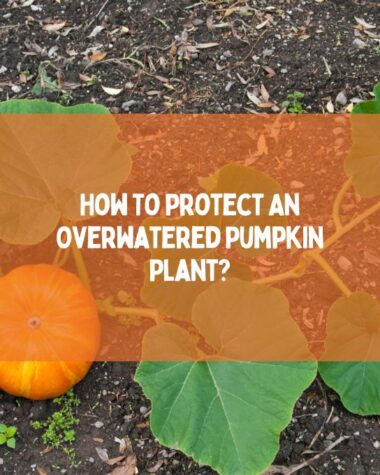You will need to purchase mini pumpkin seeds from your local nursery or online seed retailer. Once you have your seeds, you will need to prepare the soil for planting. Mini pumpkins prefer well-draining soil that is rich in organic matter. You can amend your soil with compost or well-rotted manure to provide the necessary nutrients.
Growing mini pumpkins from seeds is a fun and rewarding gardening project that can be done by anyone, regardless of their level of experience. Mini pumpkins are smaller versions of traditional pumpkins and can be used for decorating, cooking, or even as a cute little gift.
In this article, you will get different ideas on how to plant mini pumpkins.
9 Ways To Grow Mini Pumpkins From Seeds
Harvesting your mini pumpkins is easy once they have reached maturity. Mini pumpkins are ready to be picked when the stems begin to dry and turn brown. Simply cut the stems with a sharp knife, leaving about an inch of stem attached to the fruit.
There are several ways to grow mini pumpkins from seeds. You can directly sow the seeds in the garden once the soil has warmed up, or start them indoors and transplant them outside once they have sprouted.
Pre-germinating or soaking the seeds can help speed up the germination process.
1. Start Indoors Planting Mini Pumpkins
Starting mini pumpkin seeds indoors is a great way to get a head start on the growing season and ensure that your plants are strong and healthy before transplanting them outside. Select small pots or seed trays with drainage holes.
Peat pots are a good choice because they can be planted directly in the ground without disturbing the roots. Mini pumpkin seeds need warmth to germinate, so place the pots or trays in a warm location with temperatures between 70 and 80°F.
You can also use a heating mat to provide consistent warmth. Once the seedlings have their first set of true leaves, thin them out to one plant per pot or cell. When the seedlings are about 2-3 inches tall, transplant them into larger pots.
Related Reading
2. Sunlight And Soil Requirements
Mini pumpkins require full sun, which means they need at least 6–8 hours of direct sunlight per day to thrive. Choose a sunny location in your garden that is protected from strong winds, as the vines can be delicate and easily damaged.
In terms of soil requirements, mini pumpkins prefer well-draining soil that is rich in organic matter. The ideal pH level for pumpkins is between 6.0 and 6.8, which is slightly acidic to neutral.
You can amend your soil with compost, well-rotted manure, or other organic matter to improve the soil structure and provide the necessary nutrients for healthy growth.
3. Soaking Mini Pumpkin Plants
Soaking mini pumpkin seeds before planting can help speed up the germination process and improve the chances of successful sprouting. You need a container, such as a jar or bowl, and water.
Fill the container with lukewarm water, making sure there is enough water to cover the seeds. Drop the mini pumpkin seeds into the water, making sure they are fully submerged. Let the seeds soak for 4-6 hours, or overnight.
After soaking, pour the seeds into a strainer or colander to drain off any excess water. Spread the seeds out on a paper towel or cloth to dry. Plant the seeds according to the instructions for your chosen method of planting, either directly in the garden or in pots for indoor starting.
It’s important not to soak the seeds for too long, as this can lead to waterlogged seeds and reduce the chances of successful germination.
4. Germination Of Seeds
Germination is the process by which a seed sprouts and begins to grow into a seedling. Make sure you are using fresh mini pumpkin seeds, as old seeds may have lower germination rates.
Pre-soaking or scarifying can help to break down the protective coating of the seed and improve germination rates. Mini pumpkin seeds should be planted about 1 inch deep in well-draining soil. The soil should be kept consistently moist but not waterlogged.
Water the soil gently and avoid splashing water directly onto the seeds. Mini pumpkin seeds need warmth to germinate, with the ideal temperature range being between 70 and 80°F. You can use a seed-starting mat to provide consistent warmth.
Germination can take anywhere from 7–14 days or longer, depending on soil temperature and seed quality. Don’t give up on the seeds too soon, as some may take longer to germinate than others.
5. Watering Mini Pumpkin Plants
Watering is an important part of growing mini pumpkins from seeds. When you water, make sure to water deeply to encourage deep root growth. Mini pumpkins need regular watering, especially during the hot summer months.
Aim to water once or twice a week, or more frequently if the soil dries out quickly. While mini pumpkins need regular watering, they don’t like to sit in waterlogged soil. Overwatering can cause root rot and other issues, so make sure the soil has adequate drainage.
When watering, try to water at the base of the plant rather than directly on the leaves. This can help prevent fungal diseases and other issues. A drip irrigation system can be an efficient way to water your mini pumpkins, as it delivers water directly to the roots and reduces the risk of overwatering.
7. Mini Pumpkin Plant Size and Spacing
Mini pumpkins need plenty of room to spread out, so choose a location with plenty of space. If planting in a garden bed, make sure to give each plant at least 3–4 feet of space in all directions.
Mini pumpkins can also grow upward, so make sure to plan for vertical space as well. Provide a trellis, fence, or other support structure for the plants to climb. Mini pumpkin seeds should be planted about 1 inch deep in well-draining soil.
If you are starting mini pumpkins indoors and have multiple seedlings in one pot, thin them out to one plant per pot. This will ensure that each plant has enough space to grow.
8. Pumpkin Diseases and Pests
Growing mini pumpkins from seeds can be a rewarding experience, but it’s important to be aware of common pumpkin diseases and pests that can affect the plants.
- Powdery mildew is a common fungal disease that can affect mini pumpkins. To prevent it, make sure to provide adequate air circulation around the plants and avoid overhead watering.
- If powdery mildew does occur, treat it with a fungicide.
- Downy mildew is another fungal disease that can affect mini pumpkins. To prevent it, avoid overhead watering and plant-resistant varieties. If downy mildew does occur, treat it with a fungicide.
- Squash bugs are a common pest that can damage mini pumpkins. To prevent them, monitor plants regularly and remove any eggs or nymphs that you see.
You can also use row covers to protect plants from squash bugs and insecticides to control cucumber beetles.
Vine borers are a serious pest that can kill mini pumpkin plants. To prevent them, use row covers and monitor plants regularly. If you see any signs of vine borer damage, remove the affected plants immediately.
9. Harvest At The Right Time
Knowing when to harvest mini pumpkins is key to ensuring that they are flavorful and ripe. Mini pumpkins should be a deep, consistent color when they are ready to harvest. Depending on the variety, this may be orange, yellow, or green.
If the pumpkins are still green or have uneven coloring, they are not yet ripe. The stem of a ripe mini pumpkin should be dry and brown. If it is still green or pliable, the pumpkin is not yet ready to harvest.
To harvest mini pumpkins, use a sharp knife or pruners to cut the stem about 1 inch above the pumpkin. Be careful not to damage the skin of the pumpkin, as this can make it more susceptible to decay.
After harvesting, cure the pumpkins in a warm, dry location for 10–14 days. This will help to toughen the skin and extend its shelf life.
Related Reading
- Carrot Black Root Rot: Understanding And Preventing The Disease
- How to grow trailing tomato plants in small areas?
- How To Grow Eggplants In Containers – Aubergine Container Gardening
Conclusion
Growing mini pumpkins from seeds can be a fun and rewarding experience for gardeners of all skill levels. By following some basic guidelines and best practices, you can successfully grow healthy, flavorful mini pumpkins in your garden.
It’s also important to be aware of common diseases and pests that can affect mini pumpkins and take steps to prevent and manage them as needed. Harvesting at the right time can ensure that your mini pumpkins are ripe and flavorful.
I hope this article finds you in the best of health.
Thanks for reading this article!







